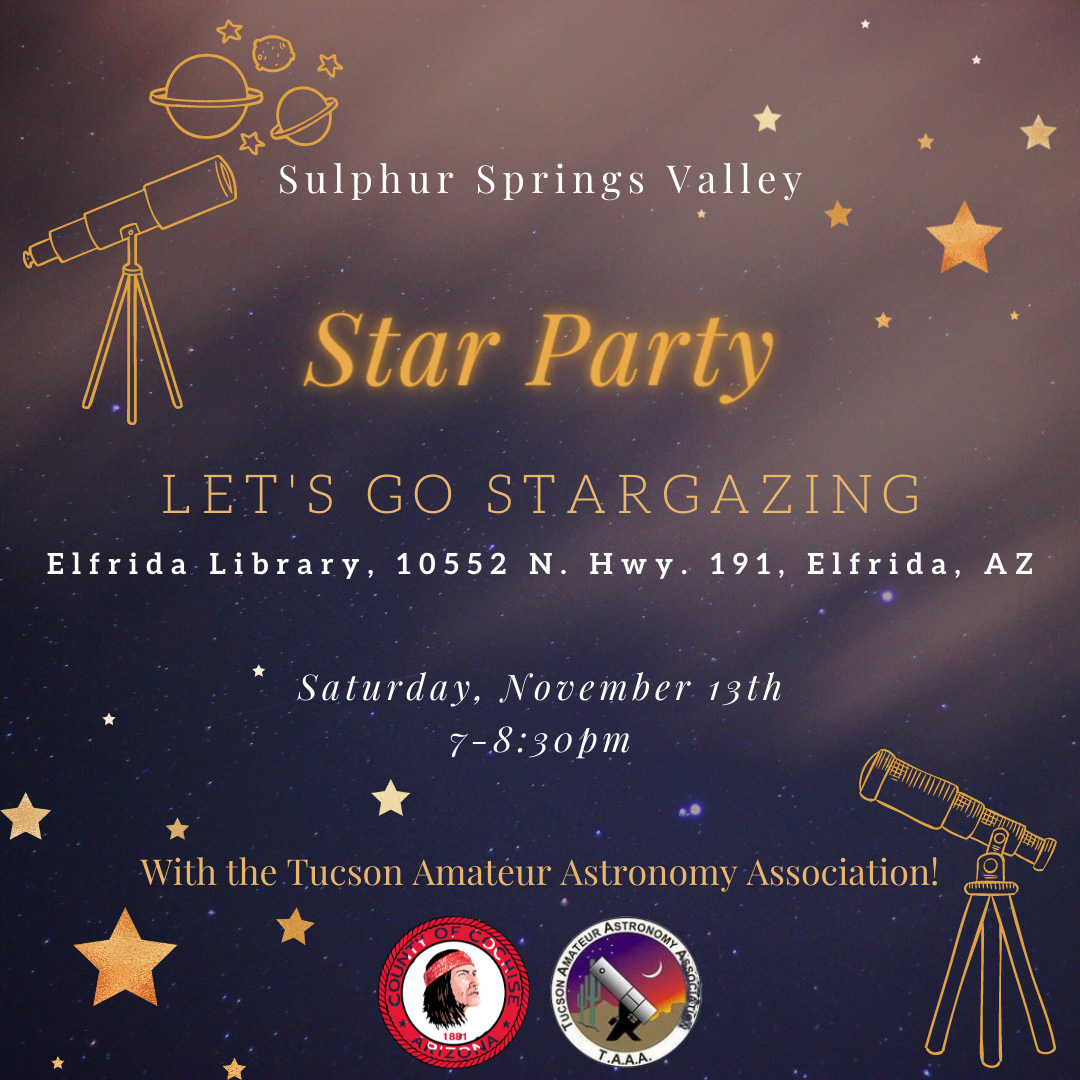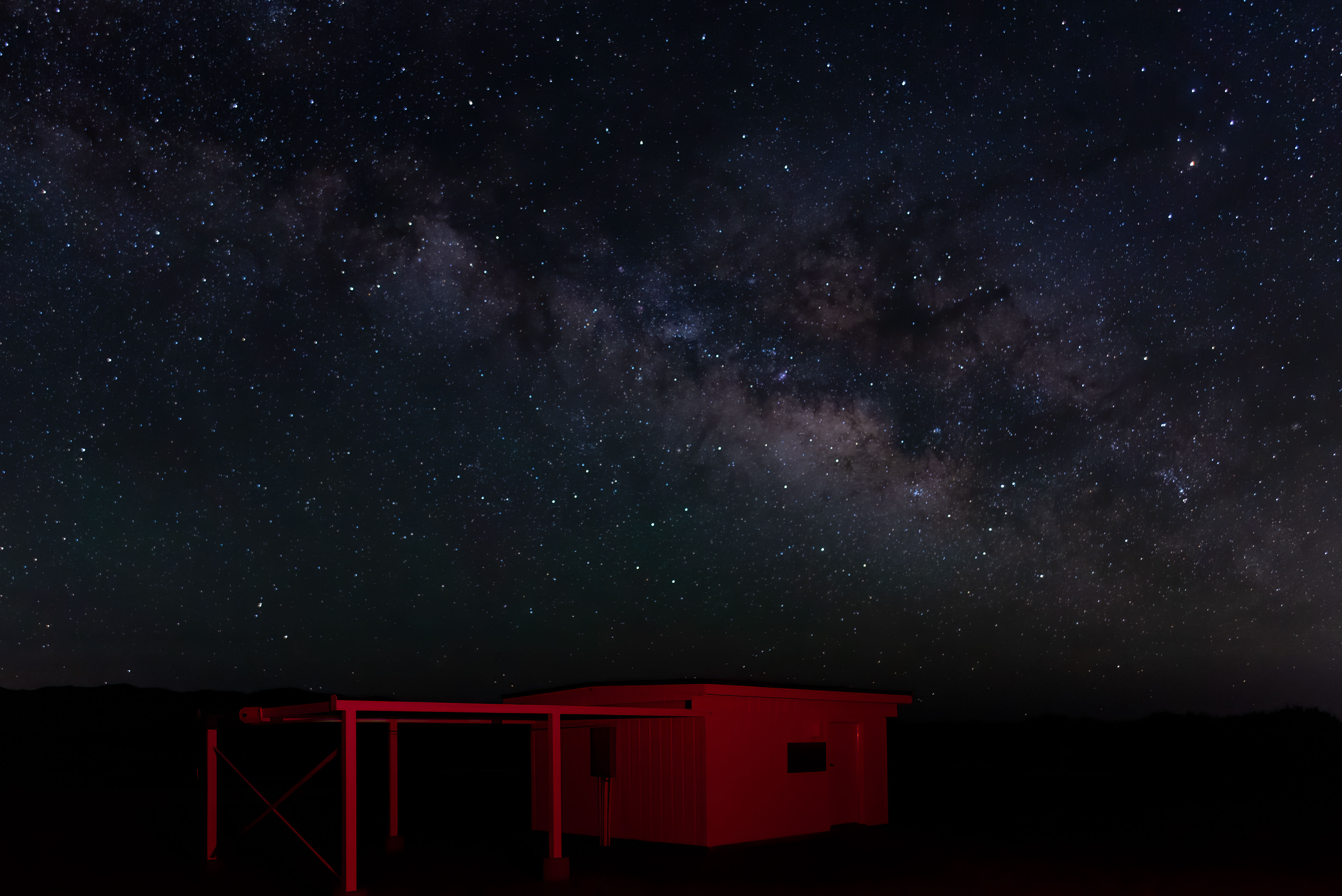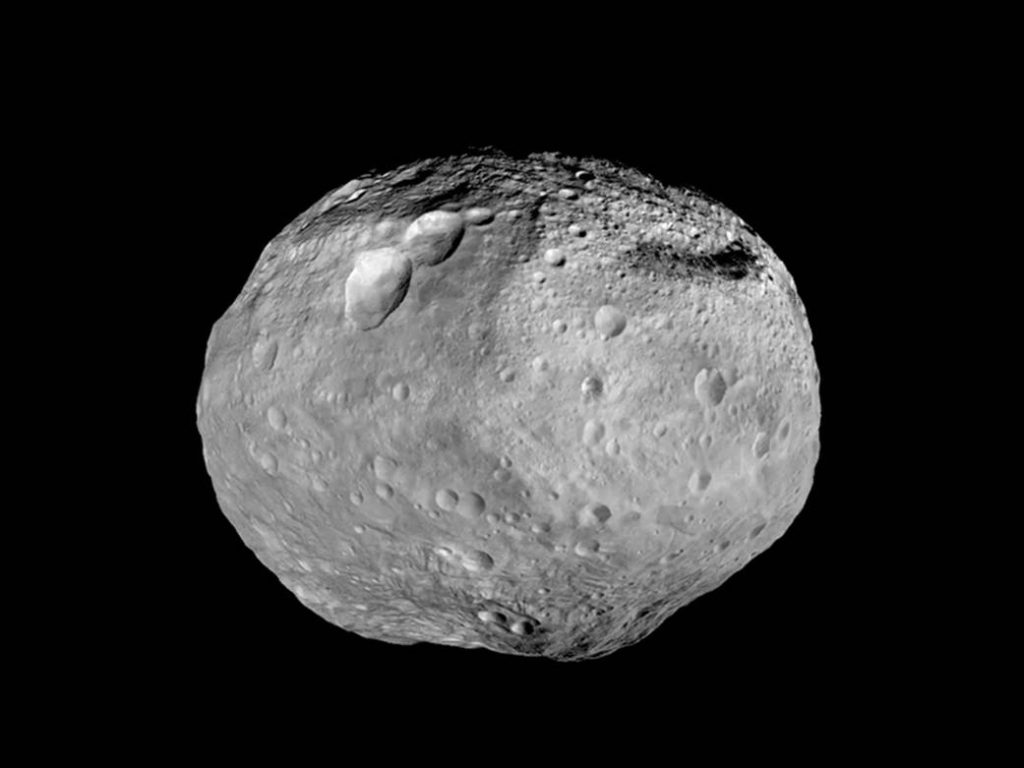6:30 pm – Main Presentation
Title: Dark Skies in Southern Arizona: Past, Present and Future
Presentation: John Barentine, astronomer, historian, and policy-maker will present on the global dark-skies movement. That the movement effectively began in the Tucson area, is no surprise given its long astronomical history. In his presentation, John will review regional achievements to date and the challenges we face in the coming decade that involve the balance of managing growth and sustaining astronomy’s contribution to the local economy. Lastly, he will touch on satellite ‘megaconstellations’, an issue not limited to our region, but of increasing concern to professional and amateur astronomers alike.
Presenter: John Barentine is the Principal Consultant at Dark Sky Consulting, LLC, and was formerly the Director of Public Policy for the International Dark-Sky Association. He earned a Ph.D. in astronomy from the University of Texas at Austin, and previously held staff positions at the National Solar Observatory, Apache Point Observatory, and the Sloan Digital Sky Survey. Throughout his career, he has been involved in educating the public about science. He is a member of the American Astronomical Society and the International Astronomical Union, and is a Fellow of the Royal Astronomical Society. The asteroid (14505) Barentine is named in his honor. His interests outside of astronomy and light pollution research include history, art and architecture, politics, law and current events.
7:15 pm – Seasonal Night Sky Presentation
Mary Turner will present her popular Seasonal Night Sky Presentation.
6:30 pm – Main Presentation
Title: Constructing SAM; a Mars Habitat at Biosphere 2
Presentation: Kai Staats, Director of the Space Analog for the Moon and Mars (SAM) will talk about this hermetically sealed habitat being built at the University of Arizona Biosphere 2 to simulate living conditions on Mars. The SAM pressure vessel incorporates a greenhouse and crew quarters with workshop, kitchen, common area, sleeping accommodations and airlock into the adjacent Mars yard. The greenhouse provides hydroponic and soil-based growing environments, controlled lighting, humidity, heating and cooling. Other support systems provide clean air and water. The adjacent half acre is a replica of a Martian landscape. Pressure suits, rovers, and drones can be tested over varied terrain and obstacles. The first teams are scheduled for May 2022. Kai will describe SAM’s core science research objectives, and share photos and stories about the construction process.
Presenter: Kai Statts, science researcher, filmmaker, and writer and a veteran developer of platforms for research and science education. He was co-founder and CEO of the world-renowned Yellow Dog Linux (YDL) operating system for ten years. The YDL platform was used in Department of Energy, NASA, and University research across a full spectrum of sciences. Kai wrote the machine learning algorithm Karoo GP which has been used at the Laser Interferometer Gravitational-Wave Observatory (LIGO) for classification of glitches and supernovae; and was principal designer of the Mt. Meru Astronomical Observatory in Tanzania, the first of its kind in East Africa.
At Arizona State University Kai led the development of SIMOC, a research-grade computer simulation and educational interface hosted by National Geographic that enables citizen scientists to explore the complexity of a human habitat on Mars. At Biosphere 2, Kai and his team are taking the next big step by building SAM.
Of special interest to TAAA, many years ago, Kai was president of the Phoenix Astronomical Society where he first met David Levy, who remains a dear friend today.
 Join TAAA and the Elfrida Library for an evening of stargazing at the Elfrida Library, Elfrida, AZ. We will have a couple TAAA telescopes and the Library will have their tabletop library telescope available for patrons to get familiar with so you can check it out in the future.
Join TAAA and the Elfrida Library for an evening of stargazing at the Elfrida Library, Elfrida, AZ. We will have a couple TAAA telescopes and the Library will have their tabletop library telescope available for patrons to get familiar with so you can check it out in the future.
Saturday November 6 and Sunday November 7 — SE TUCSON [SONOITA] (SOLAR (all day)
Empire Ranch Cowboy Festival
Highyway 83 SE of Tucson approximately 20 miles
Age/Grade Level: All Ages
# Participants: 300
Solar Observing throughout the day / Other Festival activities.
Nearest Moon Phase: N/A
Directions: East on I-10 to Highway 83. South on Highway 83 approximately 18 miles to paved road on left between miles post 40 & 39 (watch for brown Historic Empire Ranch sign). East on raod and follow for 3 miles to Empire Ranch House.
Viewing Location: TBD.
International Observe the Moon is October 16, 2021. If there are not any specific events scheduled, get out a pair of binoculars or just go out and observe the Moon with your eyes. The Moon will be a Waxing Gibbous, between First Quarter and Full.
We have several telescopes available to check out from the Pima County Library. This is a great use of the telescope, having fun observing the Moon with your family or friends. For more information on our Library Telescope program and how to check one out, visit our webpage at Library Telescope.
Our next VIRTUAL STAR PARTY is Friday August 27th from 7:30 – 9 pm Tucson, AZ time (PDT). We will stream live solar system and deep-sky viewing to our Facebook Page. Join us at: https://www.facebook.com/TucsonAstronomy
Come join us for an evening of observing at our Chiricahua Astronomy Complex (CAC), 100 miles southeast of Tucson near the Chiricahua Mountains. CAC is an incredibly dark site with several large telescopes. The number of telescopes used will depend on the number of participants. Cost is only $50/adult and $25/child under 15. For reservations and additional information, visit our Tucson Stargazing Adventures or select Star Parties, Tucson Stargazing Adventures, Observing at our very dark site.











 Join TAAA and the Elfrida Library for an evening of stargazing at the Elfrida Library, Elfrida, AZ. We will have a couple TAAA telescopes and the Library will have their tabletop library telescope available for patrons to get familiar with so you can check it out in the future.
Join TAAA and the Elfrida Library for an evening of stargazing at the Elfrida Library, Elfrida, AZ. We will have a couple TAAA telescopes and the Library will have their tabletop library telescope available for patrons to get familiar with so you can check it out in the future.